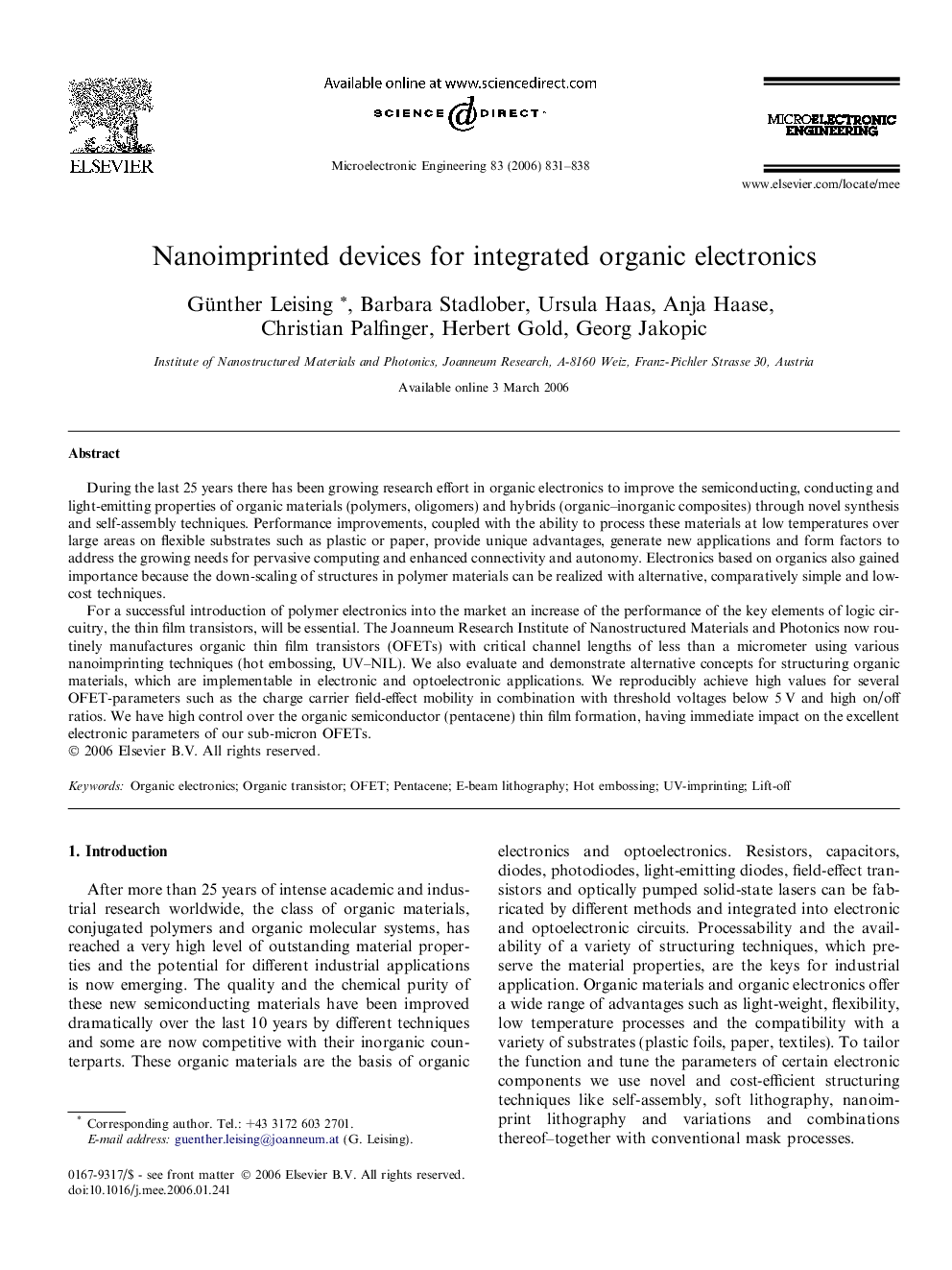| Article ID | Journal | Published Year | Pages | File Type |
|---|---|---|---|---|
| 540921 | Microelectronic Engineering | 2006 | 8 Pages |
During the last 25 years there has been growing research effort in organic electronics to improve the semiconducting, conducting and light-emitting properties of organic materials (polymers, oligomers) and hybrids (organic–inorganic composites) through novel synthesis and self-assembly techniques. Performance improvements, coupled with the ability to process these materials at low temperatures over large areas on flexible substrates such as plastic or paper, provide unique advantages, generate new applications and form factors to address the growing needs for pervasive computing and enhanced connectivity and autonomy. Electronics based on organics also gained importance because the down-scaling of structures in polymer materials can be realized with alternative, comparatively simple and low-cost techniques.For a successful introduction of polymer electronics into the market an increase of the performance of the key elements of logic circuitry, the thin film transistors, will be essential. The Joanneum Research Institute of Nanostructured Materials and Photonics now routinely manufactures organic thin film transistors (OFETs) with critical channel lengths of less than a micrometer using various nanoimprinting techniques (hot embossing, UV–NIL). We also evaluate and demonstrate alternative concepts for structuring organic materials, which are implementable in electronic and optoelectronic applications. We reproducibly achieve high values for several OFET-parameters such as the charge carrier field-effect mobility in combination with threshold voltages below 5 V and high on/off ratios. We have high control over the organic semiconductor (pentacene) thin film formation, having immediate impact on the excellent electronic parameters of our sub-micron OFETs.
